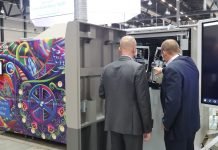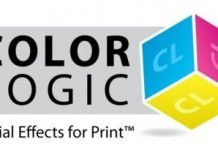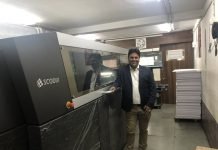
Delhi-based Rahul Print O Pack was founded by Ajay Kumar Soni in 1998. Prior to this, Soni was a freelancer providing printing and packaging services to brand owners and consulting services to a number of convertors. Over the past two years, his company grew quickly and now owns a 24,000 square feet plant in Okhla Industrial Area in South Delhi. The company provides print and packaging to a host of clients across the publishing, commercial business and FMCG sectors.
Earlier, the company farmed out all its prepress and pressroom work to other printers. Rahul had its own dedicated postpress setup at Okhla but didn’t have the equipment to finish printed work itself. As its operations grew, the company started facing trouble in maintaining quality standards among its print suppliers.
“The operational costs were increasing owing to the increased wastage and cost involved in moving printed sheets from the vendor’s facility to our own. Hence, in order to attain efficiency and better quality in our operations we took the decision to invest in a brand new 4-color sheetfed offset Heidelberg CS 92 press and a Heidelberg Suprasetter A106 CtP,” says Rahul Print O Pack’s proprietor Soni. For prepress proofing, the company uses an Epson inkjet printer.
“The answer to why Heidelberg would be its build quality, productivity and the quick and responsive service provided by the company. Moreover, Heidelberg’s cost of ownership over the course of the machine’s lifetime is much lower as compared to the offerings from its rivals owing to greater peak productivity that leads to better unit economies (per sheet cost),” Soni says.
Overall, the company uses the Heidelberg CtP and the Epson proofer for prepress, the CS 92 press for printing, three Stahl folders, two nipping machines, one gloss lamination machine, two manual die-punching machines and one folder gluer and a Wellbound perfect book binder for finishing, converting and binding.
“The commercial printing industry has hit a rough patch lately and has been subject to subdued growth. This sector has witnessed a lot of consolidation resulting in obsolete, unorganized printing units being forced to shut down. However, printing units that have spent money on buying new machines remain abreast with the latest technologies and have been able to sustain and register a decent growth and this practice is likely to help printers in the future as well,” Soni adds. “As far as the demand, it is witnessing an uptick and this has been a modest year with some growth.”
Rahul Print O Pack engages in commercial printing work such as the printing of books, brochures, pamphlets, catalogs, danglers, and magazines. Apart from commercial printing, the company produces monocartons and corrugated cartons. “Packaging had always been in our radar. We were keen on investing in a dedicated packaging unit. Packaging, as one may see it, is reaping huge dividends and is growing like never before. We had predicted this growth years ago and had invested in a folder gluer and a couple of manual die-punching machines. Over the years, we have gained a decent customer base and the business is turning out to be profitable,” Soni shares.
The next focus for Rahul Print O Pack will be to invest in brand new packaging converting equipment. At the same time, Soni doesn’t deny the possibility (or even temptation) of investing in another brand new 4-color Heidelberg in the near future. He says, “We have been able to run the new press at optimum productivity thus far and are meeting our customers’ demands successfully. However, this doesn’t rule out the possibility of investing in yet another press. We may add another machine in a year or so and when we do, we’re more than likely to replicate this investment.”
“It is always better to have more than one press from the same manufacturer. With an increase in demand, it will be easier to service our customers with two presses. It would help us achieve better turnaround times and the cost of consumables could also come down. Redundancy would also help us ensure on-time deliveries as a job could always be shifted to the other machine in the case of a breakdown,” Soni concludes. u















